Quang Binh is located on Vietnam’s north-central coast, 550 KM from Hanoi, and 180 KM from Hue. The province covers an area of 8,065.8 square kilometers and has a population of 857,818 people (as of 2008). The province is bounded to the west by Laotian Khammouane Province, to the east by the North Pacific Ocean, to the north by Ha Tinh Province, and to the south by Quang Tri Province.
General information
Quang Binh has historical significance in Vietnam. It also houses several famous Vietnamese people, including revered Senior General Vo Nguyen Giap, poet Han Mac Tu, and former South Vietnamese President Ngo Dinh Diem’s family.
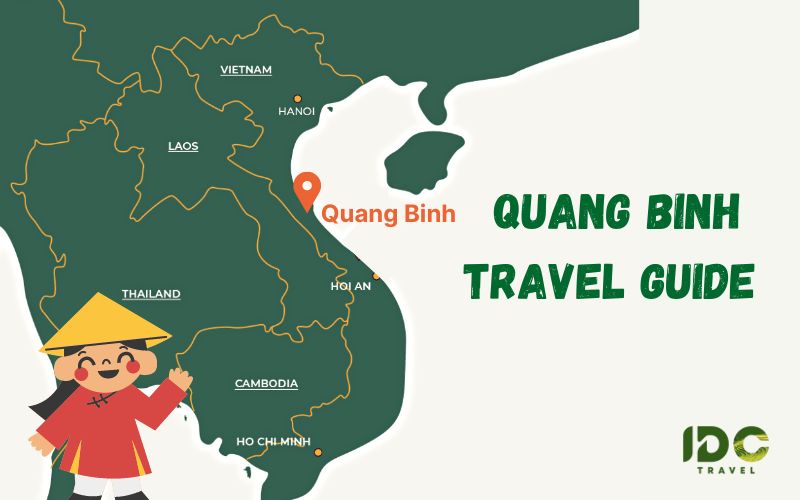
Quang Binh location – Travel guide
Phong Nha-Ke Bang National Park, a popular local attraction designated by UNESCO as a World Natural Heritage site, is located in Quang Binh. The complex is made up of lovely grottos and caves with amazing stalagmites and stalactites. The province of Quang Binh is rich in biodiversity, particularly in the Annamites eco-region. According to preliminary surveys, the Phong Nha-Ke Bang primary tropical forest is home to 140 families, 427 genera, and 751 species of vascular plants, 36 of which are endangered and listed in Vietnam’s Red Data Book.
There are also many beautiful beaches to relax on, such as Nhat Le or Da Nhay under the Da Nhay mountain pass. In addition, visitors can also visit historical-cultural relics in Quang Binh, such as the Hoang Phuc Pagoda, the Dong Hoi Citadel, the Nguyen Dynasties, the Bau Tro cultural archaeological site, and so on.
Quang Binh weather and Best time to visit
There are four separate seasons here: in spring (from February to April), it is warm with slight rains, humid and the temperature is around 18-25 degrees Celsius. In the summer (from May to July), it is hot, dry with little downpours, and the temperature may reach up to 35 to 36 degrees Celsius. In the fall (from August to October), it is rainy and cool with temperatures around 22 to 28 degrees Celsius. In the winter (from November to January next year), it is humid, with slight rain with temperatures about 12 to 16 degrees Celsius. The heaviest rainy season is from September to November.
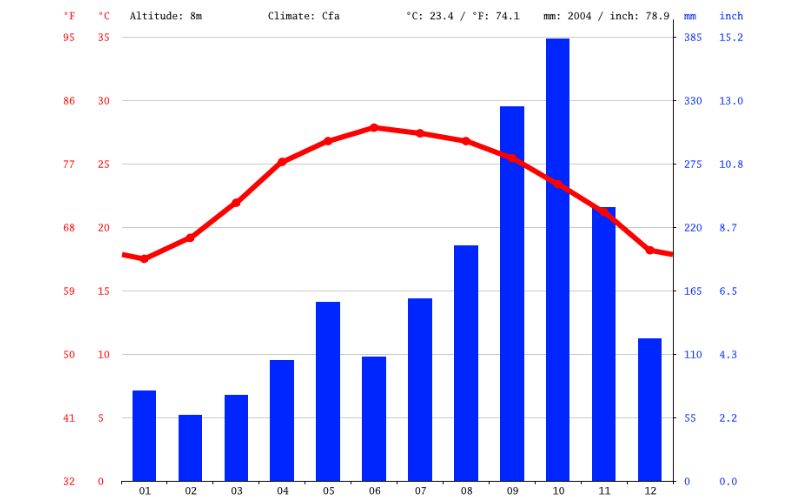
Quang Binh weather and Best time to visit
March to September is the best time to visit Quang Binh. The city is entering summer at this time, with cool weather, golden sunshine, and no rain, allowing visitors to freely participate in activities. Activities that are enjoyable. This is also the time when many Quang Binh tour services to explore caves, bays, and mountains are organized to serve tourists. Because March to September is also peak season, the number of tourists visiting Quang Binh increases. As a result, the places to visit are frequently crowded. At the same time, the cost of hotels, meals, and all services is significantly higher than in other tourist months of the year. As a result, if you intend to visit Quang Binh at this time, you should make reservations in advance.
Getting to and around Quang Binh
There are 3 ways to get to Quang Binh: by plane, by train, or by long-distance bus
By train
The major Railway Station in Quang Binh province is Dong Hoi Railway Station. Dong Hoi Railway Station is a stop for the Vietnam Reunification Express train. There are 3 routes: Hanoi City– Dong Hoi City (Quang Binh) – Ho Chi Minh City.
By planes
It will take 1 hour and 30 minutes to get to Dong Hoi City (Quang Binh) from Hanoi and 1 hour and 35 minutes for Ho Chi Minh City – Dong Hoi (Quang Binh) route.
By bus
Buses transfer to/from Hanoi – Quang Binh – Ho Chi Minh City through the National Highway No.1. There are many long-distance Bus companies that offer trips to Quang Binh. The long-distance bus from Hanoi City to Dong Hoi City often starts in the late afternoon and arrives in Dong Hoi City the early next morning.
By car
We highly recommend traveling by car because it saves time. You can also stop wherever you want to enjoy the beauty of the surroundings. IDC Travel provides a low-cost car rental service with a driver.
By motorbike
Traveling by motorcycle is inexpensive, but it is not suitable for large groups. Motorbikes can be rented at the hotels where you stay. Some areas have natural terrain that is unsuitable for motorcycle travel.
Where to Stay in Quang Binh
Quang Binh has a wide range of hotels to choose from. The majority of them are in Dong Hoi and along Nhat Le Beach. There are also many homestays located outside of the city center. The cost of a guesthouse or mini-hotel room per night ranges from $8 to $15 USD. Luxury hotels include Melia Vinpearl, Muong Thanh Luxury, Nhat Le Hotel, and Sun Spa Resort, etc.
Places to Visit and Things to Do in Quang Binh
The province of Quang Binh has an incredibly diverse and appealing mix of natural attractions, including some of the world’s most beautiful caves and stunning beaches. This province has many advantages for developing tourism because it has a long beautiful seashore of about 116, 04 kilometers of white sand and blue seawater. It is also located in a biologically diverse area, with a system of many valuable and rare plants and animals.
Phong Nha Ke Bang National Park
This is a national park in the heart of the province of Quang Binh. It safeguards one of the world’s two largest karst regions, which contains hundreds of caves and grottoes. It gets its name from the most beautiful cave, Phong Nha, which has numerous fascinating rock formations, and the Ke Bang forest. The plateau is most likely one of Southeast Asia’s finest and most distinctive examples of a complex karst landform. The charming Son and Chay Rivers (the two longest underground rivers in the Phong Nha-Ke Bang) flow gently through the reed and green bamboo rows on both sides.
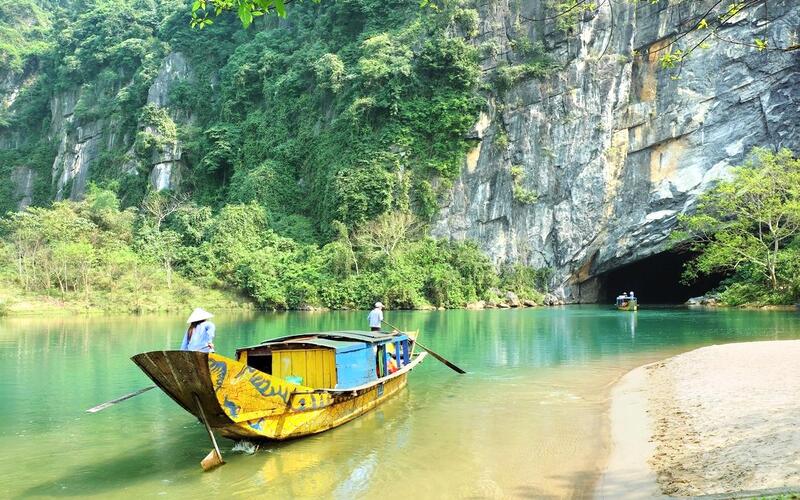
Phong Nha Ke Bang national park
The two rivers shaped the majority of the caves here. In addition, the Phong Nha-Ke Bang area has over ten spectacular streams, springs, and waterfalls, including the Gio waterfall, Madame Loan & Chai waterfall, the Mc Stream erupting from a limestone mountain range, and the Tra Ang stream. The enchanting pure Bong Lai Lake and Chai waterfall can be seen from afar, adorned with a number of dark violet flower baskets blooming in the warm weather. The primary jungles of Ke Bang have been home to 98 families, 256 genera, and 381 vertebrate species, many of which are listed in the Vietnam and World Red Books.
Son Doong Cave
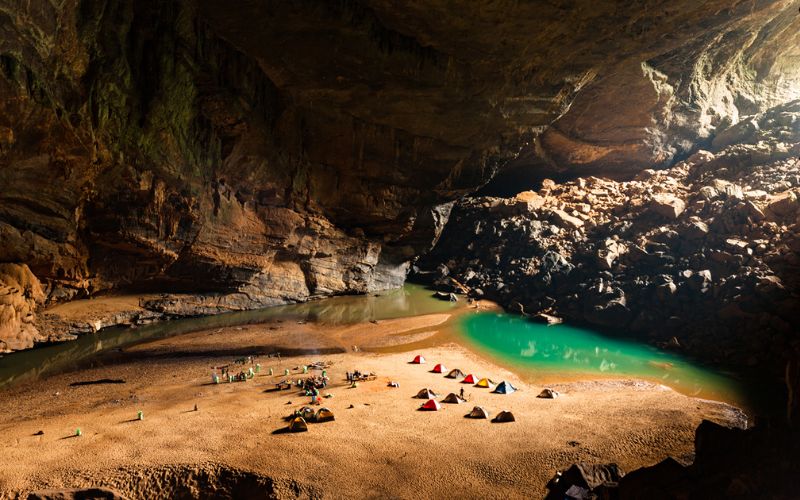
Son Doong, the world’s largest cave
Son Doong Cave is gaining international attention as a result of a recent ABC Channel of America recognition. It is one of the world’s largest caves, attracting thrill seekers from all over the world to explore. It stretches for 5 kilometers and can grow to be 200m tall and 150m wide. Traveling, on the other hand, is difficult because it necessitates a highly adventurous spirit as well as good health. Before you can join this trip, you must pass a thorough health screening.
Phong Nha Cave
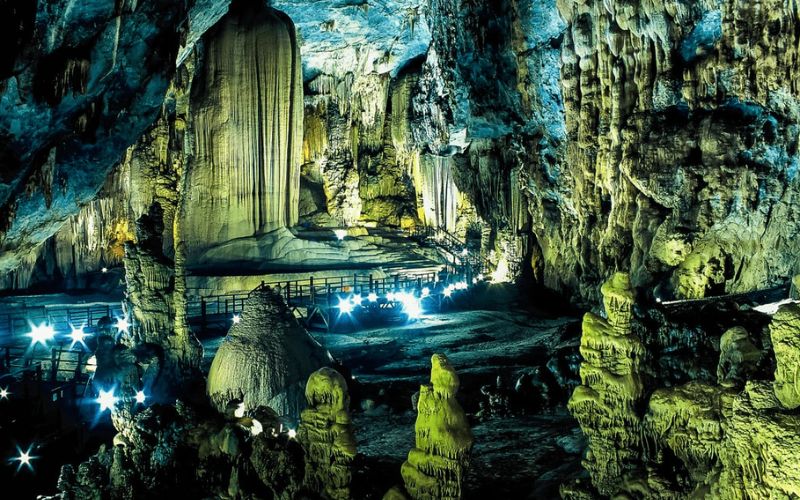
Phong Nha Cave
The cave is named after the national park in which it is located, Phong Nha. It has both a wet and a dry cave. The wet cave is a 1km-long ceiling along the river with breathtaking beauty. It may surprise you right away. The stalactites and stalagmites sparkle brilliantly. Yes, the massive ceiling with a variety of stunning topographical features, as well as the blue water river flowing inside, will provide an unforgettable experience.
Zip Line & Dark Cave
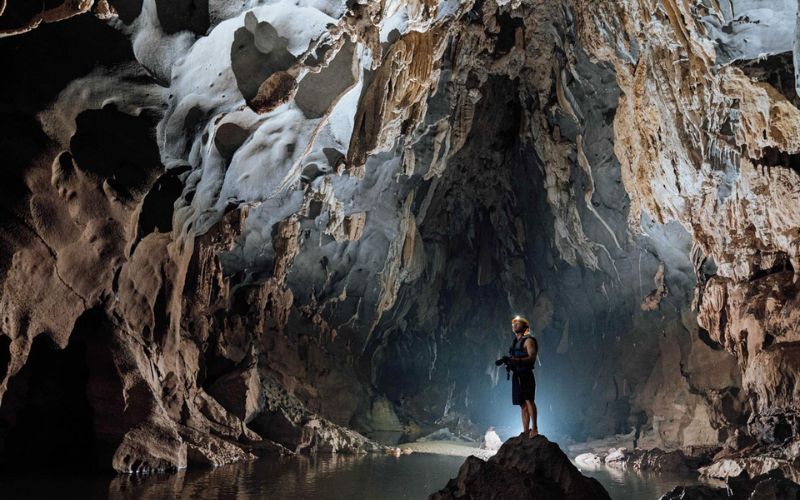
Dark cave
Before there is no light in the cave, it is called the Dark Cave. Visitors must bring a flashlight when visiting the cave. Visitors who walk inside can enjoy mud bathing and the wild beauty of this cave. It also combines with Vietnam’s longest zip line, with the main attraction being a trip into the cave. All of this makes the trip to Dark Cave ideal for mud bathing and river swimming.
Cha Loi Cave
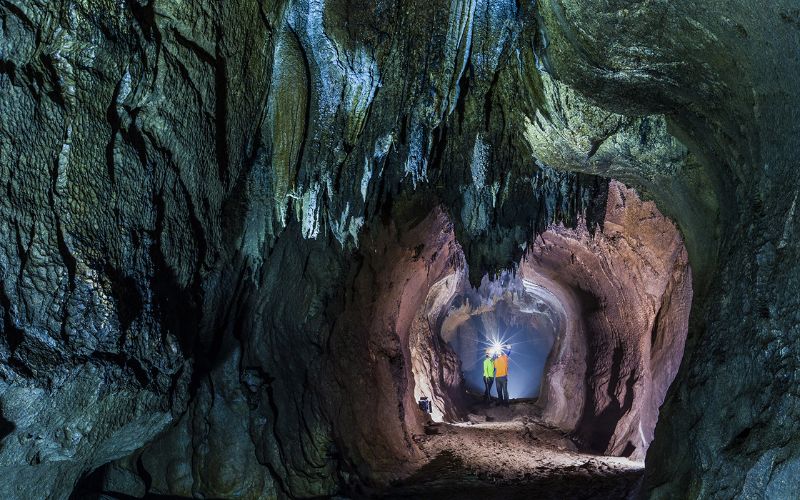
Cha Loi Cave
The cave is in Cay Sung hamlet, Ngan Thuy commune, Le Thuy district, at the foot of a limestone mountain. Cha Loi cave, located 40 kilometers from Dong Hoi, is famous for its pristine stalagmites and stalactites of various shapes.
Nhat Le Beach
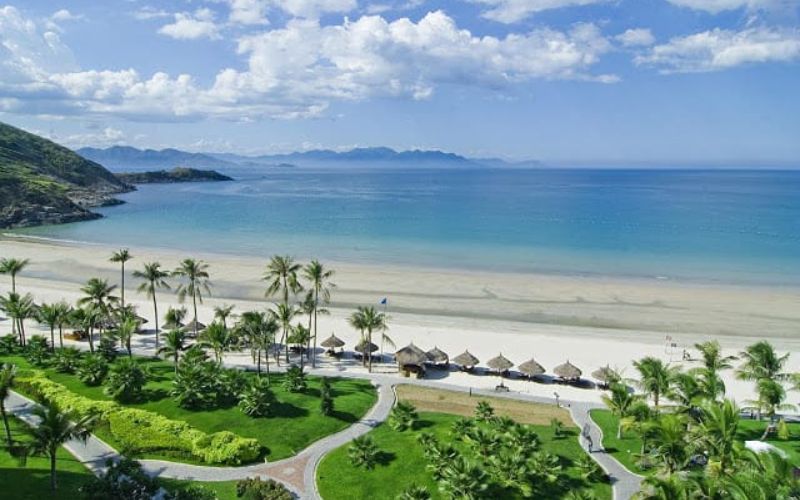
Nhat Le beach
Nhat Le Beach is one of Vietnam’s top ten most beautiful and charming beaches. The sea here is wild, with rustic and simple characteristics. As a result, many tourists prefer to stay in Quang Binh hotels near Nhat Le Beach. Visitors can go fishing in the surrounding villages and enjoy fresh seafood.
What to Eat in Quang Binh
Porridge soup (chao canh)
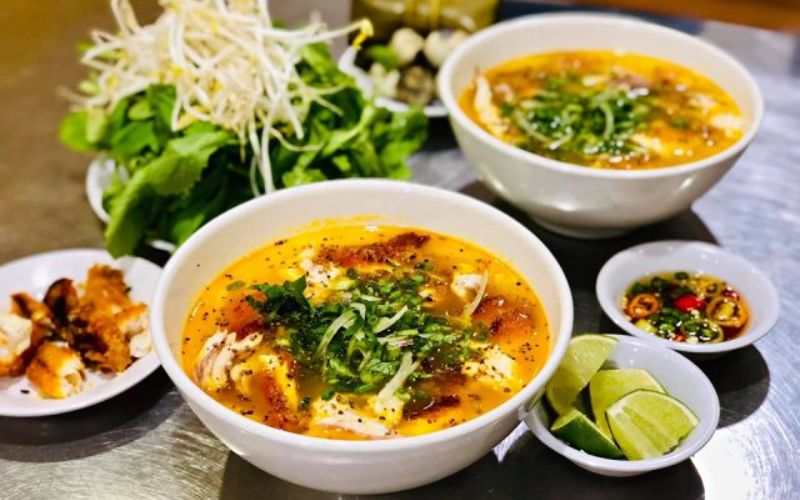
Quang Binh porridge soup
The famous Quang Binh porridge soup is a delicious and nutritious breakfast dish. A simple, rustic soup bowl filled with snakehead fish, quail eggs, spring rolls, meat, and a delectable broth, served with a variety of vegetables.
Quang Binh fried pancake (banh xeo)
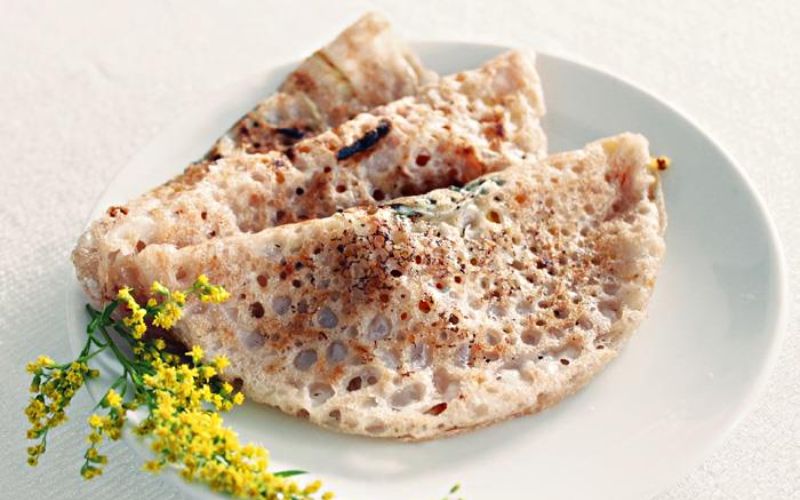
Quang Binh fried pancake
Unlike regular pancakes, Quang Binh pancakes are made from brown rice, so the finished cake will be pink in color when it comes out of the oven. Each dumped pancake will have a filling including minced shallot leaves, shrimp, meat, bean sprouts, and fragrant green onions that make many diners passionate.
Bloating Fern – Shaped Cake (banh beo)
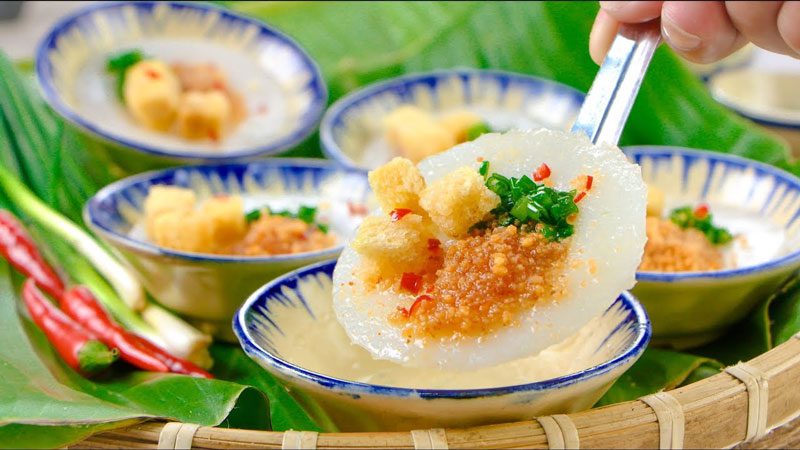
Banh Beo
The sunny and windy land of Quang Binh is not only famous for porridge soup, and fried pancakes, but also for a kind of super delicious, rustic shrimp bloating fern–shaped cake with pure white color. A plate of Quang Binh banh beo will be layered with regular layers of cake, then sprinkled with a layer of yellow lice shrimp (Quang Binh’s own specialty), minced shallot leaves, and scallions served with a cup of chili lime dipping sauce, super diluted.
Steamed rice dumpling (banh bot loc)
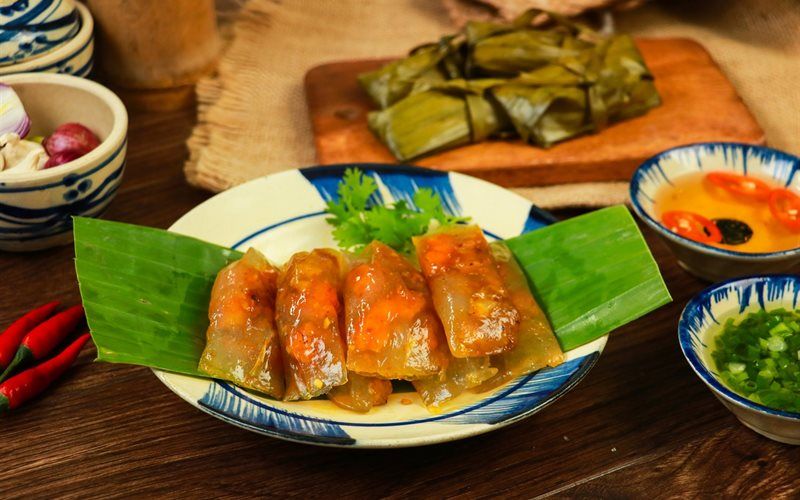
Banh bot loc
The aftertaste of Quang Binh rice dumplings is distinct from that of Hue, with rich shrimp, meat, and wood ear filling. This dish is not only eaten directly but is also wrapped in banana leaves for those who need to buy it as a gift after the trip.
We hope the information in this article is helpful to you. If you need any further travel guides, don’t hesitate to contact us right now!
Start planning your tailor-made tour with 1-1 help from our travel advisors.
- Plan your tailor - made trip with a local expert
- Book securely with money-back guarantee
- Travel stress-free with local 24/7 support
